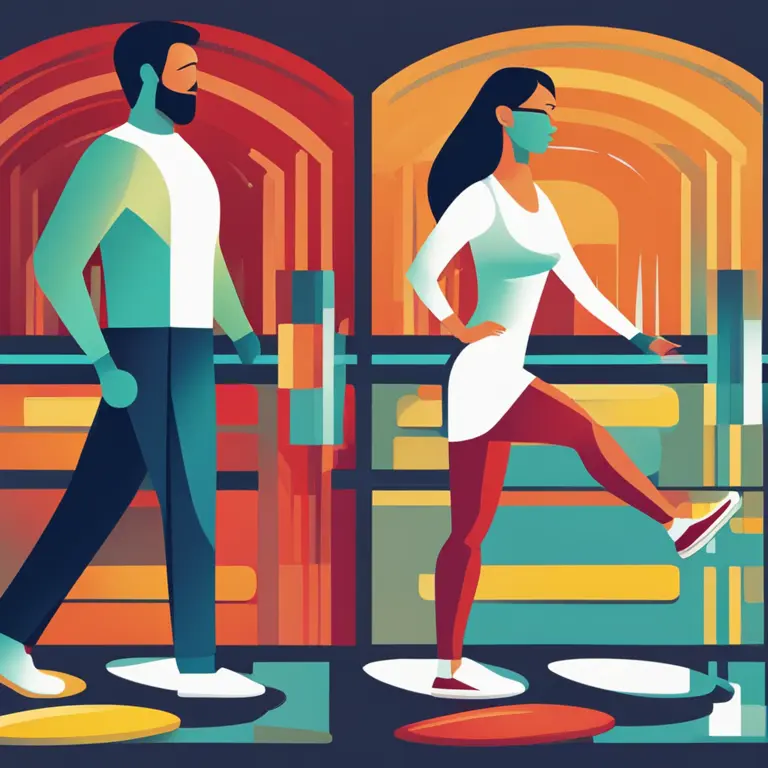
Biorhythm & Compatibility: The Sync of Life Cycles
Delve into the concept of biorhythm compatibility and how it influences interpersonal connections by syncing life cycles.
article by Adrian Wallace
Introduction to Biorhythms
Biorhythms are considered one of life's essential, yet invisible rhythms. A belief originating in the 19th century and popularized in the mid-20th century, biorhythms declare that our lives are governed by three fundamental cycles: physical, emotional, and intellectual. These cycles start at birth and oscillate in predictable patterns throughout our lives, influencing our abilities, behaviors, and moods. The concept suggests that by charting these cycles, individuals can anticipate their peaks and troughs, thus enhancing decision-making and interpersonal relations.

Understanding Biorhythm Compatibility
Biorhythm compatibility posits that when two individuals' biorhythm cycles synchronize harmoniously, they could experience an increased level of understanding and connection. Compatibility readings consider the overlap and intersection of each partner's three primary biorhythm cycles. The theory suggests that significant matches in cycles can lead to a resonance in energy levels, mood alignments, and intellectual wavelengths, impacting the dynamics in a relationship.

Physical Compatibility
The physical cycle, with its 23-day pattern, focuses on physical strength, health, and endurance. When partners are both in the high phase of their physical biorhythms, it's believed they are better sync, experiencing mutual vitality, and are more inclined to engage in physical activities together. Conversely, if one partner is at a low point while another is at a high phase, it could lead to a mismatch in energy levels, affecting activities and lifestyle choices.

Emotional Compatibility
Spanning a 28-day cycle, the emotional biorhythm reflects one's state of feeling and mood stability. Imagine the impact when two individuals are riding the emotional high together: empathy and romantic feelings might be enhanced. On the flip side, if cycle timings are mismatched, one’s emotional upswing might confront the other's downswing, potentially leading to misunderstandings and emotional distance.

Intellectual Compatibility
The intellectual cycle runs for 33 days and governs logic, analytical functions, and communication. If two partners are both at an intellectual high, there can be a stimulating exchange of ideas and profound conversations. Should the cycles be out of sync, with one person in a state of heightened mental capabilities and another in a decline, differences in perspectives and decision-making processes might arise.
The Role of Biorhythm Compatibility Today
In today’s interconnected world, with a resurgence of interest in holistic and esoteric sciences, biorhythms have found their place amongst tools for personal insight and relationship guidance. Advancements in technology and mobile apps have made it easier than ever to calculate and compare personal biorhythms. Applying this concept to explore and potentially improve compatibility in any form of relationship – be it romantic, professional, or platonic – has become more readily accessible and appealing to a wider audience.
Biorhythm Compatibility in Practice
Utilizing biorhythm compatibility isn't about predicting the future with precision; rather, it's about gaining perspective and preparing for the ebb and flow of interpersonal dynamics. Couples might turn to biorhythm charts to find the best times for significant discussions or activities. Business partners might align important negotiations or project launches when their intellectual cycles are at a cooperative peak. The practice encourages mindfulness and can foster patience and understanding in relationships.
Published: 1/25/2024
Modified: 1/25/2024
More predictions
Come back here soon to learn more about yourself and your future


The Rhythms Within: Biorhythm Horoscope Insights
Tap into the cosmic wisdom of biorhythms to understand your emotional, physical, and intellectual cycles for enhanced well-being and foresight.


The Human Biorhythm Cycle: Patterns of Life's Ebb & Flow
Delve into the human biorhythm cycle, a compelling concept in the holistic understanding of our physiological and emotional patterns over time.


The Biorhythm Debate: Effective Insight or Myth?
Discover the realities behind biorhythms, how they're calculated, and their impact on daily life. Can these biological cycles truly predict our physical, emotional, and intellectual states?